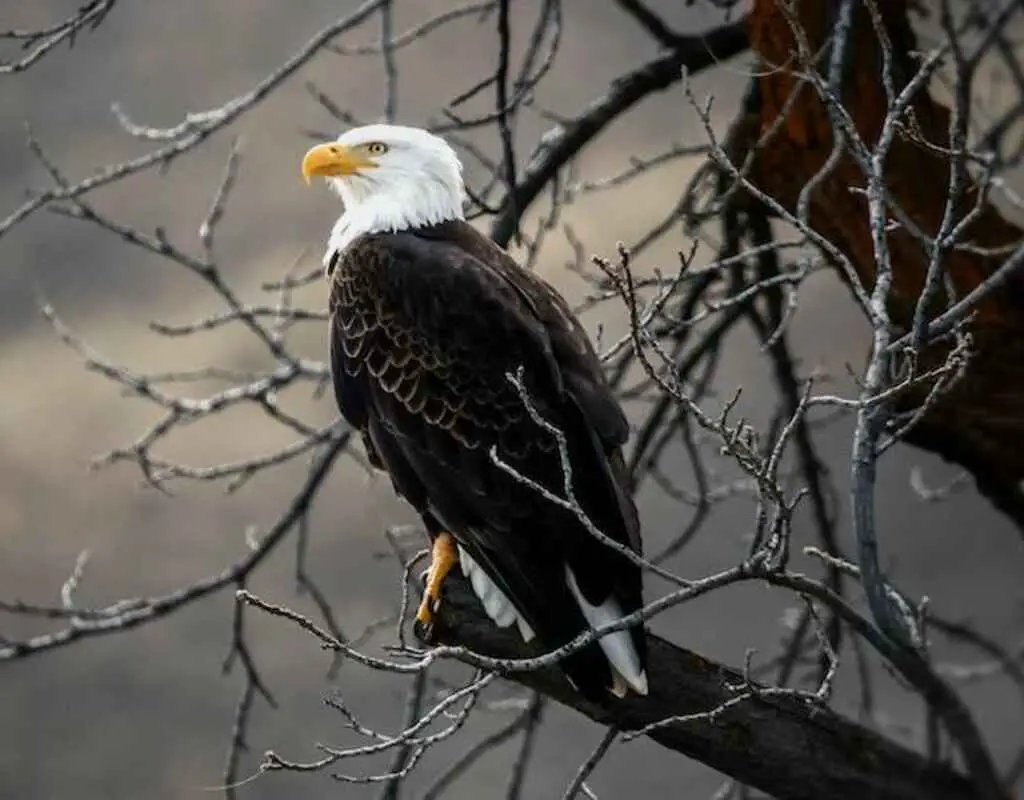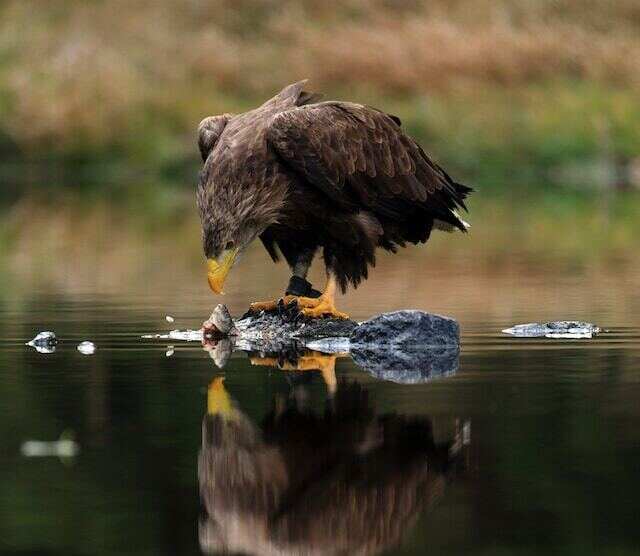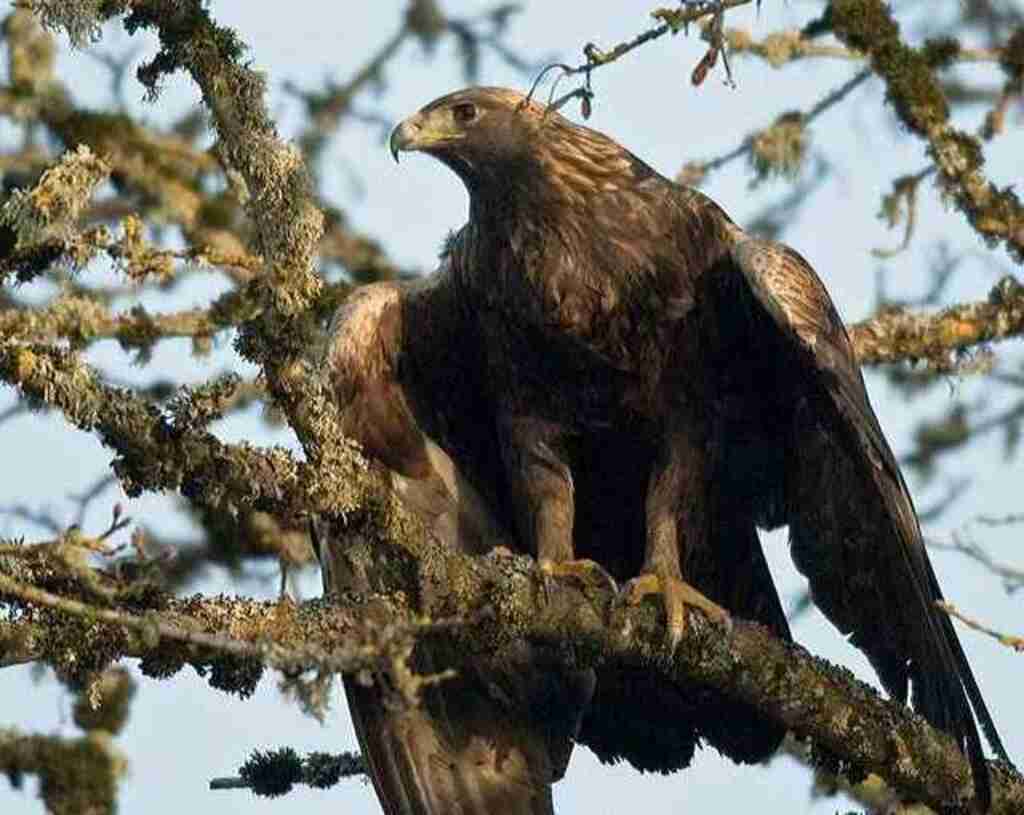Do Eagles Eat Hedgehogs? Embark on a captivating journey into the realm of these majestic avian predators as we unravel the mystery surrounding their potential appetite for the spiky denizens of the wild.
Through a scientific lens, we’ll dive into eagle diet and hunting habits, examining the intriguing interactions between these awe-inspiring birds and elusive hedgehogs.
Prepare to uncover fascinating insights and gain a deeper appreciation for the delicate balance of nature’s tapestry.
Table of Contents
- 1 Key Takeaways
- 2 Do Eagles Eat Hedgehogs
- 3 The Diet of Eagles
- 4 The Hunting Habits of Eagles
- 5 Common Prey for Eagles
- 6 Hedgehog Characteristics
- 7 Eagle-Hedgehog Interactions in the Wild
- 8 Do Eagles Actually Eat Hedgehogs?
- 9 Possible Reasons for Eagle-Hedgehog Interactions
- 10 Studies and Observations
- 11 Conservation Implications
- 12 Frequently Asked Questions
- 12.1 How often do eagles encounter hedgehogs in the wild?
- 12.2 Are there any other predators that prey on hedgehogs besides eagles?
- 12.3 Do hedgehogs have any defense mechanisms against eagle attacks?
- 12.4 Are there any regions where eagles and hedgehogs coexist but interactions are rare?
- 12.5 Can hedgehogs sense when an eagle is nearby and take evasive action to avoid being caught?
- 13 Conclusion
- 14 Author
Key Takeaways
- Eagles are skilled hunters with sharp talons and strong beaks, but hedgehogs are not a common prey for them.
- There have been documented cases of eagles preying on hedgehogs, although interactions between eagles and hedgehogs in the wild are relatively rare.
- Eagle-hedgehog interactions could be influenced by predator-prey dynamics, with eagles opportunistically preying on hedgehogs when their usual prey is scarce.
- Further studies are needed to fully understand the extent of eagle-hedgehog interactions and their impact on ecosystem dynamics, which can inform conservation efforts and management strategies.

Do Eagles Eat Hedgehogs
While eagles are formidable predators, they generally do not consume hedgehogs. Eagles primarily prey on fish, small mammals, and birds.
Although there have been rare reports of eagle-hedgehog interactions, it is not a common occurrence. Eagles’ hunting habits and diet preferences make hedgehogs a less likely target.
The Diet of Eagles
Eagles primarily consume a varied diet consisting of small mammals, birds, reptiles, and fish. They are skilled hunters and employ various techniques to capture their prey.
Eagles possess sharp talons and strong beaks, which allow them to grasp and tear apart their victims.
Their hunting strategies involve soaring high in the sky, scanning the surrounding area for potential targets.
Once a suitable prey is spotted, they swiftly dive towards it, using their powerful wings to gain speed and accuracy.
While eagles are known to be opportunistic feeders, their prey preferences vary depending on the species and the availability of food sources in their habitat.
Some eagles have a preference for fish, while others may focus on small mammals or birds. This diversity in prey selection ensures their survival in different environments.
Transitioning into the subsequent section about the hunting habits of eagles, it is important to understand their diet in order to comprehend their hunting techniques fully.
The Hunting Habits of Eagles
Raptors, known for their exceptional hunting skills, are often guided by the proverbial saying ‘the early bird catches the worm’ as they employ various strategies to capture their prey.
Eagles, as powerful and agile hunters, have developed specific techniques to ensure successful hunts. They possess keen eyesight that allows them to spot potential prey from great distances.
Once a target is identified, eagles use their remarkable speed and precision to swoop down and seize their prey with their sharp talons.
Their hunting techniques may vary depending on the habitat and the type of prey they are targeting.
Some eagles engage in aerial pursuits, chasing their quarry in mid-air, while others prefer to perch and wait for an opportunity to strike.
Prey selection also plays a crucial role in their hunting success. Eagles typically target smaller animals such as rodents, fish, and small birds, although larger species may also be targeted when available.
Transitioning into the subsequent section about ‘common prey for eagles,’ we will explore the specific types of prey that eagles commonly hunt.
Common Prey for Eagles
Various types of prey serve as a vital source of nourishment for these majestic birds of prey, including small mammals, reptiles, amphibians, and avian species.
Eagles employ a range of hunting techniques to capture their prey, such as aerial attacks, stealthy pursuits, and surprise ambushes.
When hunting small mammals, eagles often use their sharp talons to snatch and carry them away.
The decline in hedgehog populations has raised questions about the potential impact on eagle diets.
While hedgehogs are not a primary food source for eagles, they are occasionally targeted as prey.
However, it is important to note that the decline in hedgehog populations is not solely due to eagle predation, but rather a combination of factors including habitat loss and human activities.
This transition sets the stage for the subsequent section on hedgehog characteristics.

Hedgehog Characteristics
Hedgehogs possess a unique and spiky exterior, which serves as a defensive mechanism against potential predators. Their spines, made of keratin, are sharp and pointed, deterring predators from attacking.
Hedgehogs also have the ability to curl into a tight ball, further protecting their vulnerable body parts. These adaptations have allowed hedgehogs to survive and thrive in various habitats.
Despite their defensive mechanisms, hedgehogs still face threats from predators such as foxes, badgers, and owls.
However, it is important to note that hedgehogs are not a common prey for eagles. Eagles typically target smaller mammals, birds, and fish.
While hedgehogs may encounter eagles in the wild, their interactions are relatively rare and are not a significant factor in the hedgehog’s natural predator-prey dynamics.
Eagle-Hedgehog Interactions in the Wild
In the wild, interactions between eagles and hedgehogs are relatively rare due to their differing dietary preferences and habitat preferences.
Eagles are large birds of prey that primarily feed on small mammals, birds, and fish, while hedgehogs are insectivores that mainly consume insects, worms, and small vertebrates.
However, there have been documented cases of eagles preying on hedgehogs, suggesting a potential symbiotic relationship between the two species.
The impact of these interactions on ecosystem dynamics is not well understood, as the frequency and extent of eagle-hedgehog interactions are limited.
Nonetheless, it is possible that the predation of hedgehogs by eagles could have implications for both populations, influencing their respective dynamics and potentially affecting other species within the ecosystem.
Transitioning to the subsequent section, the question arises: do eagles actually eat hedgehogs?
Do Eagles Actually Eat Hedgehogs?
Eagle-hedgehog interactions in the wild have long been a subject of interest among researchers due to their potential ecological impact.
However, it is important to establish whether eagles actually consume hedgehogs as part of their diet.
While eagles are known to be opportunistic predators, feeding on a wide range of prey items, the consumption of hedgehogs by eagles is not well-documented.
Studies have shown that eagles may occasionally prey on hedgehogs, but it is not a common occurrence.
It is worth noting that hedgehogs possess a unique defense mechanism of rolling into a ball, which may deter eagles from targeting them.
Additionally, hedgehogs are nocturnal, making it less likely for them to encounter eagles during their active hours.
Understanding the dynamics of eagle-hedgehog interactions is crucial for assessing the potential impact on both species and their respective ecosystems.
Moving forward, we will explore possible reasons for these interactions.
Possible Reasons for Eagle-Hedgehog Interactions
One possible explanation for the intriguing interactions between eagles and hedgehogs in the wild lies in the unique ecological niches occupied by these two species.
Eagles are apex predators, while hedgehogs are small mammals that primarily feed on insects and other invertebrates.
The predator-prey dynamics between these two species could be a contributing factor to their interactions.
Eagles may opportunistically prey on hedgehogs when their usual prey is scarce or inaccessible.
Additionally, hedgehogs may be more vulnerable to eagle predation in certain habitats where they lack suitable cover or when they are compromised due to injury or illness.
These interactions could have ecological impacts, such as influencing the population dynamics of hedgehogs or affecting the foraging behavior of eagles.
Further studies and observations are needed to fully understand the extent and significance of these interactions in natural ecosystems.

Studies and Observations
Previous studies and observations have provided valuable insights into the interactions between eagles and hedgehogs.
These observations have focused on documenting eagle behavior, particularly when encountering hedgehogs in their natural habitats.
Through these studies, researchers have observed that eagles exhibit varying degrees of interest in hedgehogs, with some individuals actively hunting and preying upon them, while others show little to no interest.
These observations have allowed researchers to gain a better understanding of the factors influencing eagle-hedgehog interactions, such as the availability of alternative prey and the eagles’ hunting strategies.
By studying these interactions, scientists aim to unravel the complex interplay between predator and prey in order to inform conservation efforts and mitigate potential conflicts.
Understanding the behavior of eagles towards hedgehogs has important implications for the conservation of both species, and can help guide management strategies to ensure their coexistence in the wild.
Transitioning to the subsequent section, these studies shed light on the conservation implications of these interactions.
Conservation Implications
The conservation implications of studying the interactions between eagles and hedgehogs are far-reaching, as they provide valuable insights into the delicate balance of predator-prey dynamics and can inform management strategies to ensure the coexistence and preservation of these iconic species in their natural habitats.
| Habitat Loss | The study of eagle-hedgehog interactions can shed light on the impact of habitat loss on both species. As human activities continue to encroach upon natural habitats, understanding how this affects the availability of prey for eagles and the suitability of habitats for hedgehogs is crucial for conservation efforts. | |
| Predator-Prey Dynamics | Investigating the interactions between eagles and hedgehogs allows researchers to gain insights into the predator-prey dynamics at play. This knowledge can help in understanding the ecological roles of both species and how their populations may be influenced by changes in prey availability or predator behavior. | |
| Management Strategies | The findings from these studies can guide the development of effective management strategies to ensure the coexistence and preservation of eagles and hedgehogs. By understanding the factors that influence their populations, conservationists can implement measures to mitigate threats, such as habitat restoration, predator control, or the creation of protected areas. |
Overall, studying the interactions between eagles and hedgehogs not only adds to our understanding of predator-prey dynamics but also provides valuable insights for conservation efforts aimed at preserving these species in the face of habitat loss and other threats.

Frequently Asked Questions
How often do eagles encounter hedgehogs in the wild?
The frequency of eagle-hedgehog interactions in the wild remains understudied. However, it is known that such interactions can have a significant impact on hedgehog populations, potentially leading to declines in certain areas.
Are there any other predators that prey on hedgehogs besides eagles?
Hedgehogs have natural predators, including foxes, badgers, and some species of owls. The presence of these predators contributes to the ecological balance by controlling the population of hedgehogs and preventing overpopulation.
Do hedgehogs have any defense mechanisms against eagle attacks?
Eagle vs. Hedgehog: How do they interact in the wild? Hedgehogs have several defense mechanisms against eagle attacks, including rolling into a tight ball, erecting sharp spines, and emitting a strong odor. These adaptations help deter predation.
Are there any regions where eagles and hedgehogs coexist but interactions are rare?
Eagles and hedgehogs can coexist in regions where human activity is limited, leading to rare interactions. The impact of human activity on eagle-hedgehog interactions is not well-studied and requires further investigation to fully understand their coexistence dynamics.
Can hedgehogs sense when an eagle is nearby and take evasive action to avoid being caught?
Hedgehogs possess keen senses that allow them to detect potential predators, including eagles. They can sense an eagle’s presence through auditory cues such as wingbeats and take evasive action to avoid being caught. Eagle hunting techniques include aerial attacks and surprise strategies.
Conclusion
In conclusion, the study of eagle-hedgehog interactions sheds light on the complex dynamics of predator-prey relationships in the wild.
While it is not common for eagles to prey on hedgehogs, observations and studies have shown instances of this interaction occurring.
The possible reasons for such interactions are varied and require further investigation.
These findings have important conservation implications, as understanding the ecological interactions between different species is crucial for maintaining balanced ecosystems.
Like a carefully woven tapestry, the intricate connections between predators and prey contribute to the intricate fabric of our natural world.



